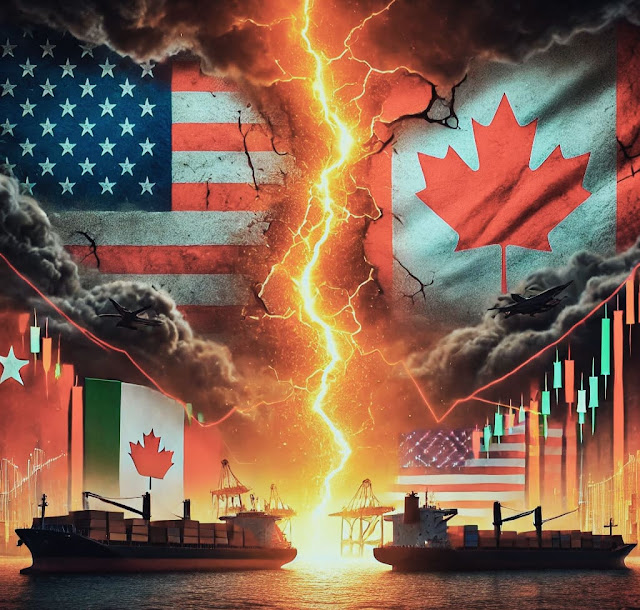Introduction
In a bold economic move, the United States has reignited a trade war by imposing significant tariffs on imports from Canada, Mexico, and China. This decision, announced by President Donald Trump, has already begun to disrupt global trade dynamics, impacting markets, industries, and consumers worldwide.
The Tariff Breakdown
- Canada & Mexico: A 25% tariff has been placed on imported goods, including key commodities such as aluminum, steel, and automobiles.
- China: A 10% tariff on various Chinese imports, particularly affecting technology products, electronics, and manufacturing components.
These tariffs aim to boost domestic manufacturing, reduce reliance on foreign goods, and pressure trade partners into renegotiating agreements. However, the economic consequences are complex and far-reaching.
Economic Impact on the U.S. and Global Markets
Stock Market Reactions
Following the tariff announcement, Wall Street saw an immediate reaction, with the Dow Jones Industrial Average and S&P 500 experiencing volatility. Investors fear potential retaliation from affected countries, which could lead to further economic uncertainty.
Consumer Price Increases
As import costs rise, American consumers may face higher prices on everyday goods, from electronics to vehicles. Companies reliant on international supply chains could also see profit margins shrink, leading to potential job cuts or cost-cutting measures.
Trade Relations and Diplomatic Tensions
- Canada & Mexico: Both nations have expressed strong opposition to the tariffs, considering countermeasures that could further escalate trade tensions.
- China: As a major economic rival, China may respond with its own tariffs on American exports, intensifying the ongoing economic standoff between the two superpowers.
Historical Context: Lessons from Past Trade Wars
The U.S. has previously engaged in trade wars, most notably in 2018-2019, when similar tariffs led to fluctuating markets and economic uncertainty. Experts warn that history may repeat itself, with prolonged disputes potentially harming economic growth.
What’s Next? Future Implications
As negotiations unfold, businesses and policymakers must navigate an evolving trade landscape. Potential outcomes include:
- **Renegotiation of Trade Agreements**: If affected nations engage in talks, revised agreements could emerge that benefit all parties involved.
- **Increased Domestic Production**: While tariffs may encourage local manufacturing, the transition could take time and require significant investment.
- **Global Economic Ripple Effects**: Countries beyond North America and China could also feel the impact, as supply chains and international trade routes adjust to new regulations.
Conclusion
The revival of the U.S. trade war is set to reshape the economic landscape, with consequences for businesses, consumers, and global relations. As the situation develops, staying informed and adapting to market shifts will be crucial for stakeholders at all levels.


Post a Comment